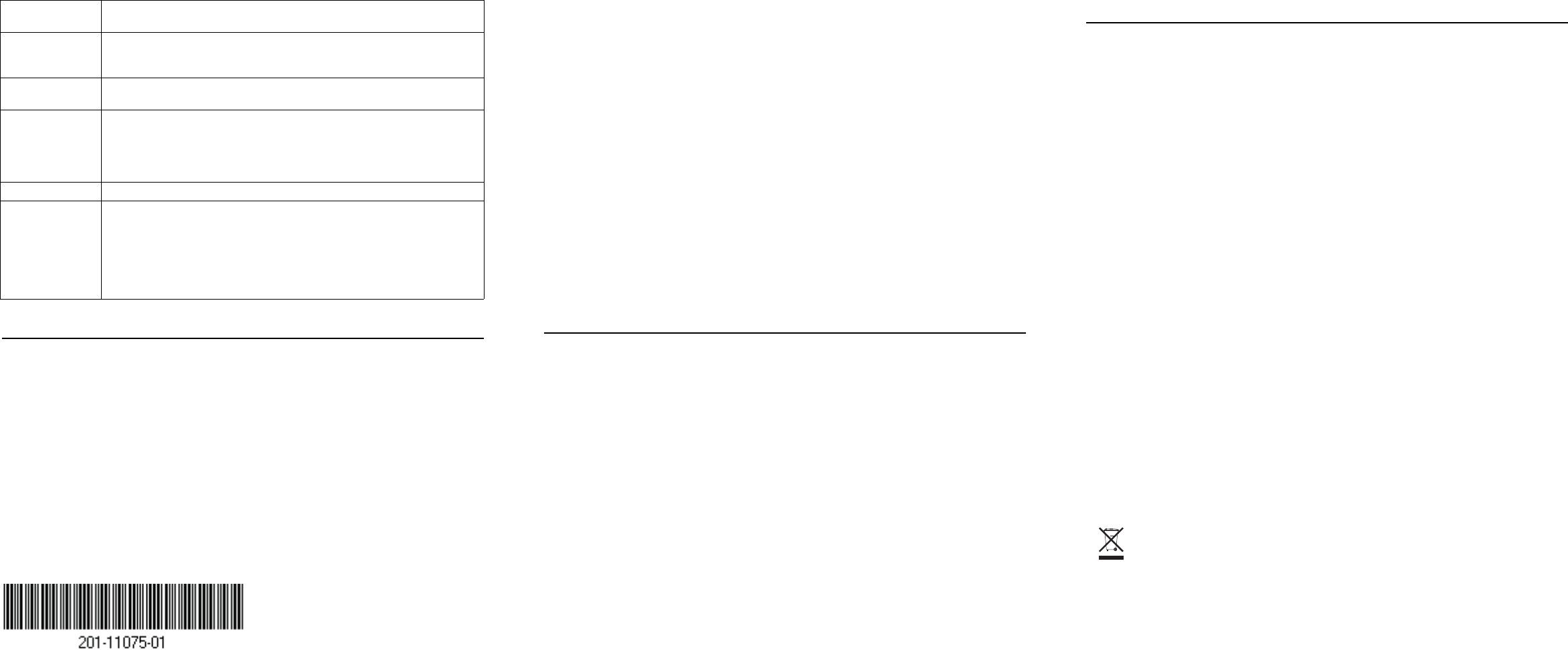
May 2, 2007
This symbol was placed in accordance with the European Union Directive
2002/96 on the Waste Electrical and Electronic Equipment (the WEEE
Directive). If disposed of within the European Union, this product should be
treated and recycled in accordance with the laws of your jurisdiction
implementing the WEEE Directive.
© 2007 by NETGEAR, Inc. All rights reserved. NETGEAR and the NETGEAR logo are registered trademarks
of NETGEAR, Inc. in the United States and/or other countries. Other brand and product names are trademarks or
registered trademarks of their respective holders. Information is subject to change without notice.
Compliance
Access Points are radio transmission devices and as such are subject to governmental regulation. Network
administrators responsible for the configuration and operation of Access Points must comply with local transmis-
sion regulations. Specifically, Access Points must use channel assignments appropriate to the location in which
the Access Point will be used.
WAGL102 or WGL102 Light Wireless Access Points are intended only for installation in Environment A as
defined in IEEE 802.3af, Power over Ethernet. All interconnected equipment must be contained within the same
building, including the interconnected equipment’s associated LAN connections.
When installed in an air-handling space, such as above suspended ceiling (plenum), the unit is required to be
powered via PoE only. Additional cabling such as Fast Ethernet (FE) cables installed in such spaces should be
suitable under NEC Article 800.50 and marked accordingly for use in plenums and air-handling spaces with
regard to smoke propagation, such as CL2-P, CL3-P, MPP or CMP.
FCC
This equipment has been tested and found to comply with the limits for a Class B digital device, pursuant to Part
15 of the FCC Rules. These limits are designed to provide reasonable protection against harmful interference
when the equipment is operated in a commercial environment. This equipment generates, uses, and can radiate
Supported
Frequency Bands
2.400 ~ 2.4835GHz (Global), 5.18 ~ 5.32 GHz, 5.745 ~ 5.825 GHz, channels
country specific
Supported
Operating
Channels
• 802.11b—US, Canada, Taiwan 11; ETSI up to 13; Japan 14
• 802.11g—US, Canada, Taiwan 11; ETSI up to 13; Japan 13
• 802.11a—US, Canada, Taiwan 13; ETSI up to 19; Japan 8
Output transmit
power
100 mW maximum (or lower as configured on the WFS709TP ProSafe Smart
Wireless Switch to comply with local regulatory requirements)
Radio band
selection
Via WFS709TP ProSafe Smart Wireless Switch in software manageability:
• Management of all 802.11 parameters
• Network wide AP management via WEB GUI and SNMPv3
• Access Point Profiles, managed by geographical location, BSSID and radio
type
Encryption 40bit / 64bit / 128bit / 152bit WEP, TKIP, AES
802.11b and g
Typical Receive
Sensitivity
• 802.11b mode at 1Mbps: -95 dBm; 802.11b mode at 2 Mbps: -93 dBm;
802.11b mode at 5.5 Mbps: -91dBm; 802.11b mode at 11 Mbps: -89 dBm;
• 802.11g mode at 6 Mbps: -91 dBm; 802.11g mode at 9 Mbps: -90 dBm;
802.11g mode at 12 Mbps: -89 dBm; 802.11g mode at 18 Mbps: -87 dBm;
802.11g mode at 24 Mbps: -84 dBm 802.11g mode at 36 Mbps: -81 dBm;
802.11g mode at 48 Mbps: -77 dBm; 802.11g mode at 54 Mbps: -75 dBm;
802.11g mode at 108 Mbps: -72 dBm
radio frequency energy and, if not installed and used in accordance with the instruction manual, may cause harm-
ful interference to radio communications. Operation of this equipment in a residential area is likely to cause
harmful interference in which case the user will be required to correct the interference at their own expense.
Any changes or modifications not expressly approved by the party responsible for compliance could void the
user's authority to operate this equipment.
This product complies with Part 15 of the FCC Rules. Operation is subject to the following two conditions: (1)
this device may not cause harmful interference, and (2) this device must accept any interference received, includ-
ing interference that may cause undesired operation.
RF Radiation Exposure Statement
This equipment complies with FCC RF radiation exposure limits. This equipment should be installed and oper-
ated with a minimum distance of 20cm (7.9 inches) between the radiator and your body for 2.4 GHz and 5 GHz
operations. This transmitter must not be co-located or operating in conjunction with any other antenna or trans-
mitter.
This device when operated in the 5.15 to 5.25 GHz frequency range is restricted to indoor use to reduce the
potential for harmful interference to co-channel Mobile Satellite Systems.
Europe
Warning-This is a Class B product. In a domestic environment, this product may cause radio interference in
which case the user may be required to take adequate measures.
This product complies with 1999/5/EC, EN5022 Class B, and EN5024 standards.
Certifications
Electromagnetic Compatibility
IEC 60950 CB certificate and report
FCC DOC Part 15 Class B (digital portion)
FCC Part 15 Subpart C 15.247
FCC Part 15 Subpart E 15.407
RSS 210 (Canada)
CE marked with NB letter of opinion
— EN 300 328 2.4 GHz
— EN 301 893 5.4 GHz
AS/NZS 3548 Class B
AS/NZS4771 (C-tick)
Safety Compliance: IEC 60950; EN 60950
Plenum Use: Suitable for use in environmental air handling space in accordance with Section 300.22.C of the
National Electrical Code, and Sections 2-128, 12-010(3) and 12-100 of the Canadian Electrical Code, Part 1,
C22.1
Medical: EN 60601-1-1: 2001; EN 60601-1-2: 2001
Technical Support
Thank you for selecting NETGEAR products.
After completing installation, locate the serial number on the bottom label of the Light
Wireless Access Point and use it to register your product at
http://www.netgear.com/register.
Registration on the web site or over the phone is required before you can use our
telephone support service. The phone numbers for worldwide regional customer support
centers are on the Warranty and Support Information card that came with your product.
Go to http://www.netgear.com/support for product updates and web support.




